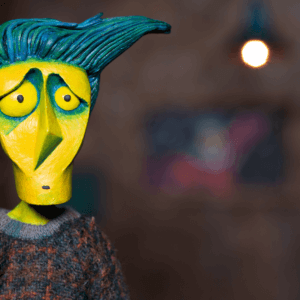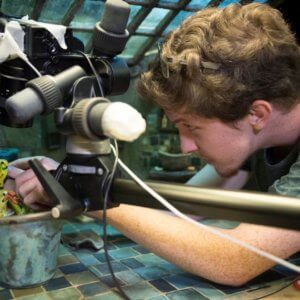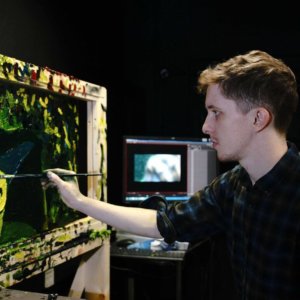Eighth Consecutive Cannes Selection for NFTS Animation: David McShane’s ‘Solar Plexus’
National Film and Television School (NFTS) students are to compete for the prestigious short film Palme D’Or for an incredible eighth year in a row at this year’s Cannes film festival, which takes place between the 14th and 25th May. NFTS graduation animation, Solar Plexus directed by David McShane, written by Jessica Sinyard and produced by Paida Mutonono was picked from 1971 works submitted by film schools from all over the world and is one of just 17 films selected for the Cinéfondation short film programme. Only two of the 17 films selected originate from the UK.
Solar Plexus uses two animation techniques; stop-motion involving two sets and puppets, and oil paint-on-glass. The short film centres around Noah who has not accepted the death of his mother, an astronaut. In order to move on, he must break the umbilical cord that still connects them.
David who hails from Worksop in the Midlands was inspired by an outline of the story pitched to him by NFTS Screenwriting student, Jessica Sinyard. David said:
Jessica sent me a pitch with an image of an astronaut curled up in the foetal position. The cord coming from the suit reminded me of an umbilical cord and felt oddly emotional.
[Speaking on the film’s selection at Cannes] It feels wonderful and surreal! I’m excited to see all the other films at the festival. It’s particularly lovely to have the time, tears and effort that so many people put into Solar Plexus celebrated.
Solar Plexus’ selection at Cannes is yet another success for the NFTS animation department, which the School is particularly renowned for. Alumni including Oscar winning, Wallace and Gromit creator, Nick Park and Peppa Pig creator, Mark Baker. NFTS graduation animations have also won the British Short Animation BAFTA for five years in a row from 2014.
We managed to grab David for a couple of quick questions about the film…
The loss of a parent is a relatable subject to many, but what was your thinking behind framing it around an astronaut?
The idea actually stemmed from an image that my writer, Jessica Sinyard, brought to me: an empty astronaut suit floated in a sea of black with an umbilical-like cord emanating from its gut. The story built up around that.
I became interested in the idea of the rituals surrounding grief. I wondered how we would grief for someone whose body we can never recover. I read Antigone and Ocean Vuong’s poetry. That idea of unresolved grief and loved ones as wounds resonated with me. I liked the astronaut suit as a symbol of a disappeared body with real presence. It felt poetic and oedipal and horrific – all great things!
The puppets and sets look great; and the oil-painted sequence works very well for conveying the film’s resolution. Before production, did you imagine the film as purely stop-motion or purely as oil painted? Was your choice affected by the budget or time-frame?
The technique, as a mix of stop-motion and paint, was planned from the start. I had done tests combining the two and wanted to find a story that utilised both. I planned on using stop motion as a more ‘real’ setting whereas oil-paint (at least to me) lent itself to a more psychological feel. The intent was to create this transition into a more internal space where our main character, Noah, could find some sort of resolution.
I had made a short in oil-paint, but I had never shot a stop motion before. Paul Berry’s ‘The Sandman’ was a huge influence. The puppets are deceptively simple but the animation is magical. Animating in paint, things like hands, eye movements and small gestures are super time consuming. I realised that I would have more freedom to create these small moments in stop motion.
Time was always at the back of my mind, but it wasn’t too much of a factor as I was animating the film. I would just go in at weekends and make up for lost time when needed! We ended up coming in well under budget as it was quite a simple production with only one character. It was great not to have to make compromises due to cost when making the film.
For more information, please visit www.nfts.co.uk





